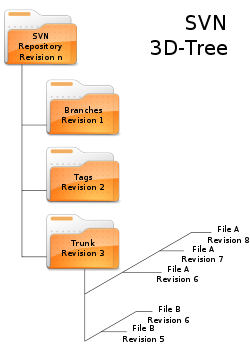
This scans the repository and lists all file revisions based on the date you enter. The svn+ssh method requires the use of real Unix accounts and Unix file.

When specifying revisions, you can click Search to open the Search Revisions dialog. Opens the Revert Modifications dialog which you can use to specify parameters for reverting any local changes to revisions maintained in the repository.
#Subversion user archive#
The specified file(s) are retrieved from the IDE’s local history archive and reinstated into your local working copy. Opens the Revert Modifications dialog, enabling you to revert any delete actions that you have committed to files in your local working copy. Image::images/exclude-from-commit-small.png
#Subversion user password#
Subversion remembers the last repository username and password used in each working copy, which means, among other things, that if you use svn checkout -username myuser you never need to specify the username again. Image::images/history-viewer-small.pngĪllows you to mark the file to be excluded when performing a commit. Most Subversion commands take the -username option to specify the username you want to use to the repository. From the History Viewer you can also perform a diff or roll back your local copy to a selected revision. From this panel, you can choose to exclude individual files from the import (as shown below), or identify the MIME types of files before importing.įor example, you can perform the following actions on a file:ĭisplays author and revision number information in the left margin of files opened in the Source Editor.Įnables you to search for and compare multiple revisions of the selected file in the IDE’s History Viewer.

In the text area beneath Specify the Message, enter a description of the project you are importing into the repository.Ĭlick Finish to initiate the import, or optionally, click Next to continue to a third panel that enables you to preview all files that are prepared for import. In this case, the username can be specified in one of the following settings: auth 'default' userName user. SubGit also requires a Subversion username when using the SSH key-based authentication. A folder containing the name of your project is suggested for you in the Repository Folder text field by default. The sshKeyFilePassphrase setting specifies a passphrase that can be optionally used to protect the SSH private key. In the Repository Folder panel, specify the repository folder in which you want to place the project in the repository.
If your SVN repository requires a username and password add the -usernameSee the Subversion User FAQ for further details. GITREPOPATH/var/opt/gitlab/git-data/repositories/USER/REPOS.git. Depending on your selection, you may need to specify further settings, such as repository username and password, or, in the case of svn+ssh://, you must specify the tunnel command to establish the external tunnel.

In the Subversion Repository panel of the Import wizard, specify the protocol and location of the Subversion repository as defined by the Subversion URL. From the Projects window (Ctrl-1 on Windows/Cmd-1 on OS X), select an unversioned project and choose Versioning > Import into Subversion Repository from the node’s right-click menu.


 0 kommentar(er)
0 kommentar(er)
